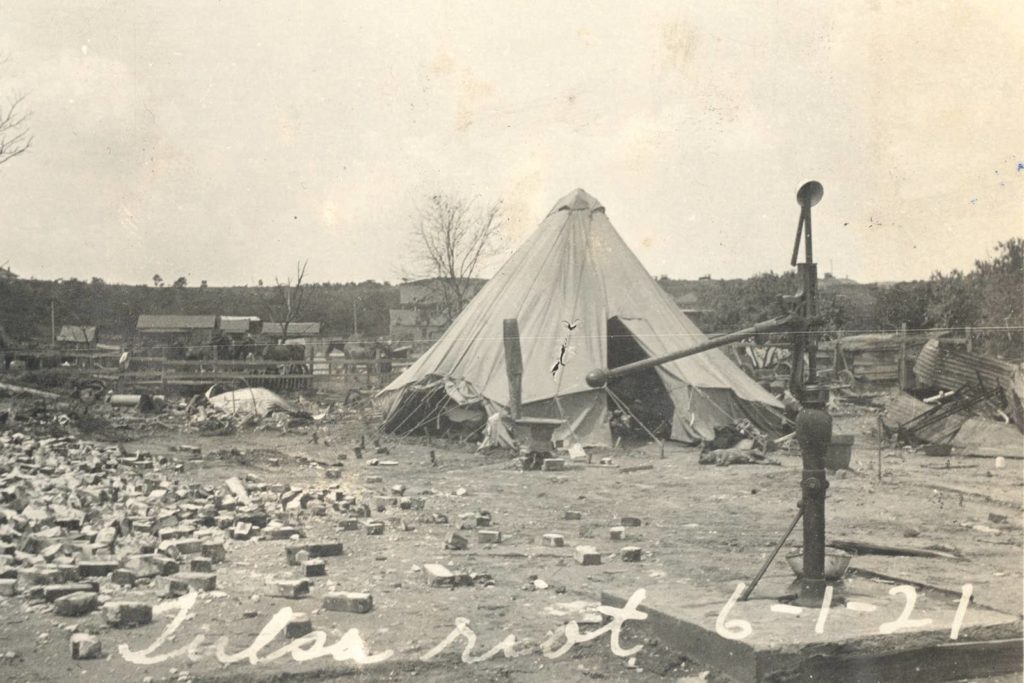In the months following the Massacre, perhaps for even a year, Greenwood residents
“lived in tents . . ., combating floods, heat, and cold. Pneumonia, typhoid fever, malnutrition, smallpox, and stress all took their toll. So too did broken hearts.”
North Tulsa, which has the most areas of concentrated poverty of any area in the City, is severely lacking in affordable, healthy housing.2 This has been a trend throughout the century since the Massacre.3
In 1957, approximately 75% of Tulsa’s entire Black community was “boxed in an area
(which substantially mirrors the area that burned in the Massacre),” with “[a]bout 55% of the dwelling units in the area [being] dilapidated, obsolete, or otherwise substandard.”4
Given that “substandard housing is connected to a range of health problems including injuries, respiratory diseases, neurological disorders, poor child development, and psychological dysfunction,”5 it is no wonder that the life expectancy is lower for those living in North Tulsa than those living anywhere else in the city. 6
1 JAMES S. HIRSCH, RIOT AND REMEMBRANCE: THE TULSA RACE WAR AND ITS LEGACY 118 (2002).
2 PRESTON BRASCH, COURTNEY NELBACH & MIKE SHOUSE, A HOUSING STRATEGY FOR TULSA: UNDERSTANDING THE COST OF HARMFUL HOMES, 7-8 (2016), https://45e2ly1gtqp9jmqme2fiw751-wpengine.netdna-ssl.com/wp-content/uploads/sites/3/2015/01/Housing-Strategy-for-Tulsa-CAC-12.19.16.pdf.
3 See generally, George Edward Gawf, Negro Influence on Public Policy in Tulsa, Oklahoma (Sept. 29, 1969) (unpublished M.A. thesis, Oklahoma State University) [hereinafter, “Gawf, Negro Influence”] 4Gawf, Negro Influence, at 95BRASCH, NELBACH & SHOUSE, HOUSING STRATEGY FOR TULSA, at 4.

